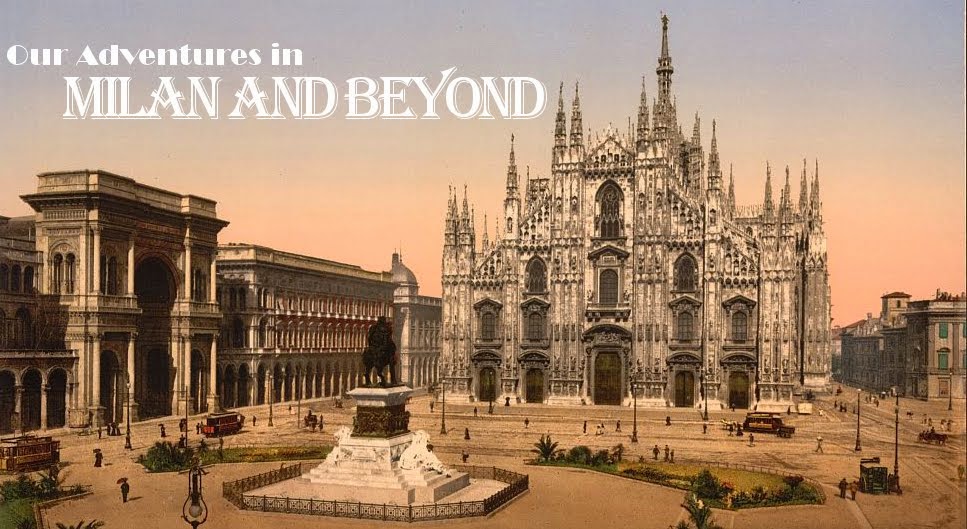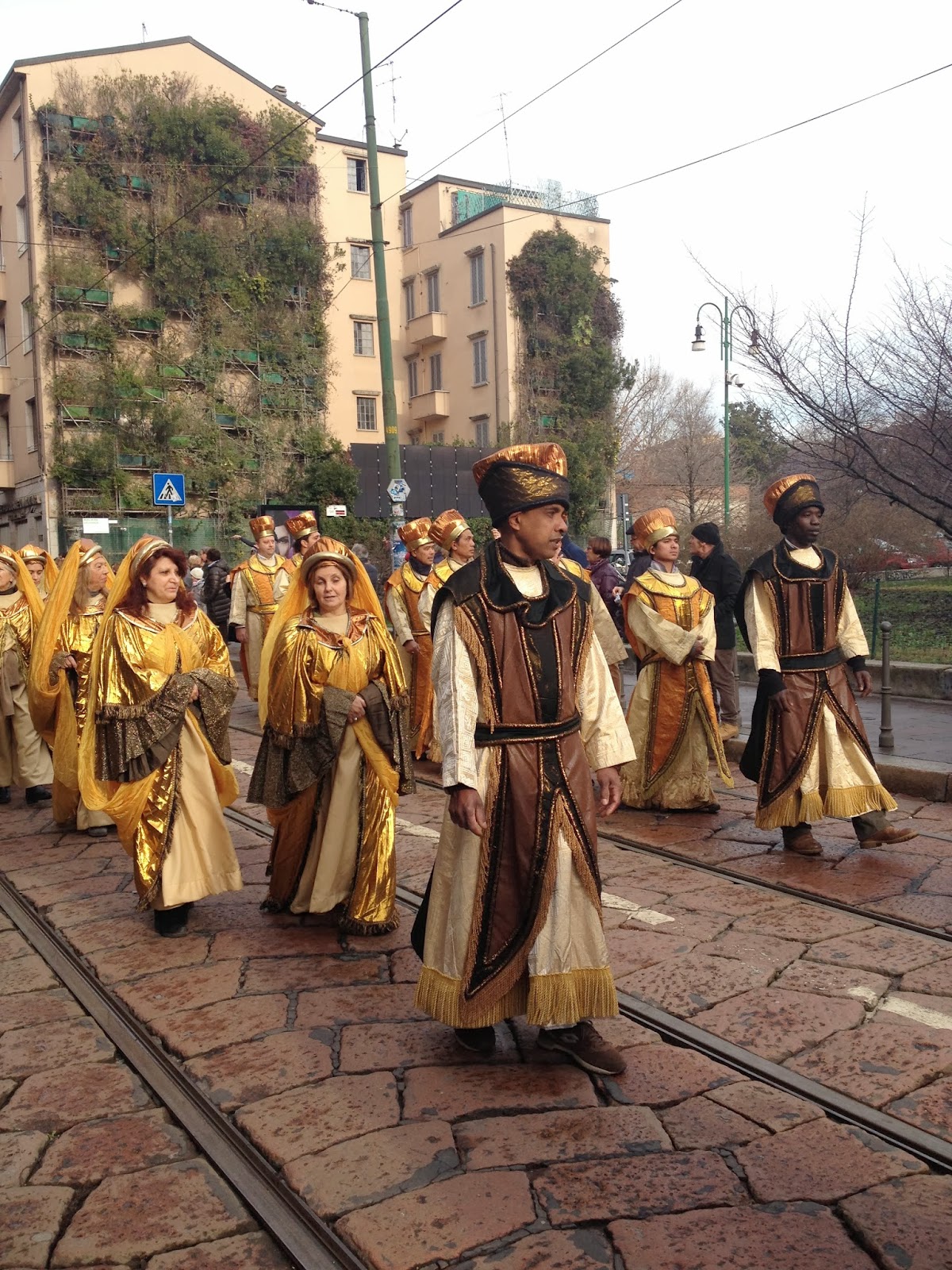When we decided to spend the year in Milan, we knew that we might have the
opportunity to travel to other destinations. Ken was asked to
attend a conference at the London School of Economics (LSE). Given the nature
of the conference and the opportunity to be in London, we decided to definitely
go. It was a thoroughly enjoyable visit. I haven't followed the
British economic crisis that closely, but if London is indicative of what is
happening in Britain, it certainly is making a comeback (although we are told that
London doesn't reflect the real estate situation in the rest of the
country). There was definitely lots of buzz. I hadn't been there in
a few years. Large crowds were everywhere; construction in many parts of
London. I had always appreciated how multi-cultural London is but found it even more diverse on this trip. I also noticed a larger Muslim population than in the
past.
We stayed in Club Quarters located in Lincoln's Inn Fields, the
largest public square in London. It was laid out in 1630. It is adjacent
to Lincoln's Inn, one of the four Inns of Court in London to which barristers
of England and Wales belong and are called to the Bar. Apparently
in Dickens’
Bleak House the sinister
solicitor, Mr. Talkinghom, had his offices in one of the Inns of Court. Also on
the square is the home of Sir John Soane, an architect whose house was
established in 1833 as a museum, definitely worth a visit.
As soon as we arrived ,Ken joined his colleagues at the LSE and I went on my
favorite walk in London. The weather was brisk but the sun was
bright. I walked down Oxford Street (filled with shoppers) to Hyde
Park. It was as beautiful as ever. I think it is the combination of
the size of the park and the landscape that makes it remarkable. I passed
the Serpentine and headed for Knightsbridge. An area of international restaurants has been
created across from the
Victoria and Albert Museum . The area is a lovely plaza with no cars and outdoor
eating. (I have noticed in London, Spain, and Italy outdoor eating is
preferred even in colder weather.) As I ate Middle Eastern food, it was
delightful seeing families, students, and businessmen all enjoying the sun and
their lunch.
 |
| Marble Arch |
 |
| Serpentine - Hyde Park |
I then walked to the V&A and followed a friend's recommendation to go to
the medieval section of the museum. The museum always surprises me.
It is an amazing collection of artifacts from throughout the world. This section
covers art and culture from 300-1600 A.D. with spectacular examples of religious art and sculpture. I must admit I took the long way back to the hotel (did get a bit lost) and walked along
Piccadilly and the entire length of Bond Street. Fashion
and wealth are alive and well.
 |
| V & A |
The conference dinner was at a French bistro in Covent Garden -- 30 people
seated at long tables served large platters of leg of lamb and much wine.
It is always fun to meet Ken's colleagues especially at conferences abroad
which bring together academics from all over the world. I also enjoy
seeing graduate students included in these meetings. The LSE had three
conferences meeting simultaneously. We saw a few current and former
Harvard graduate students and other colleagues, meeting them unexpectedly on the street or
in the elevator of the hotel.
The next day as the conference continued, I walked to the Wallace Collection
in Hertford House, a London town house with a collection of 15th to 19th
century fine and decorative arts. The museum was established in 1897 with
the family stipulation that no object could leave the collection. (Similar to
Isabella Stewart Gardner's request for her Boston museum). It is a spectacular house on a quiet
London street and given the time of day, I practically had the house all to
myself. (I am seeing many museums this year and am developing an
appreciation of the goals of the curators - each museum has its own purpose and
personality). The museum is south of Regents Park and north of Oxford
Street in Marylebone. It is a neighborhood of hospitals, small
restaurants, and interesting shops. I walked on one of my favorite streets nearby, Charolette Street. a street of small shops and restaurants. It was easy to spend the afternoon in that part of London.
That evening Ken and I went to see the play,
The Curious Incident of the
Dog in the Night, an adaptation of a novel by Mark Haddon (if you haven't
read it, it is a great read). We were thrilled with the production.
The story is told from the perspective of a young boy who is autistic.
The post-modern (not sure how else to describe it) set and sound effects allow
the audience to view the world from this perspective. Theatre in London,
like New York, is exciting and this production didn't disappoint. After
the play we walked through Chinatown and found a small restaurant where we shared
some quite good appetizers and soup.
Saturday, the conference ended and we could be tourists together.
Our first stop was the Churchill War Rooms, near 10 Downing Street. They
have been expanded since I had been there (many years ago) and we found the displays
confusing - very high tech. That aside, what an amazing time it was in the
history of Great Britain. To be in this bunker gives one the sense of how
frightening and challenging the German assault on Britain was and why Churchill
has gained iconic status. I then wandered for several hours through the
National Museum and stopped by my favorite cheese shop (I haven't found one as
exciting in Milan), Neal's Yard in Covent Garden. The owner of the shop
in the 1970's wanted to encourage local farmers to produce cheese and has
continued to support local providers. The cheddar cheese may be the best in the
world. I brought some back to Milan. That evening Ken took me to
the Delauney, a restaurant that has the elegant flair of a traditional Viennese coffee house
-- white linen, crystal chandeliers and excellent service. Upon Ken's
recommendation, I had spatchcock poussin - delicious.
Our last day in London we walked in early morning along the south side of the Thames. We discovered a local culinary fair and the book stalls that are
probably there every Sunday. From there we had a beautiful view of
Parliament and Big Ben. That afternoon we met a close friend and
colleague of Ken's in Islington for brunch and then walked to the Arsenal
football stadium. Our son-in-law is a fan and we wanted to send him
pictures of the stadium.
 |
| London Eye |
We left London excited by its energy and opportunities.


















